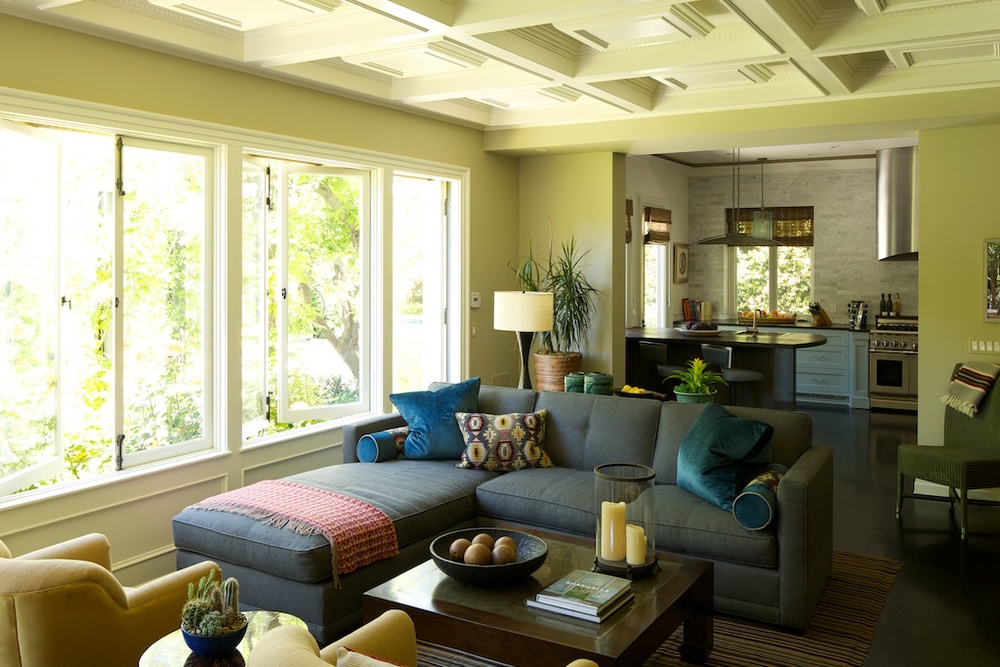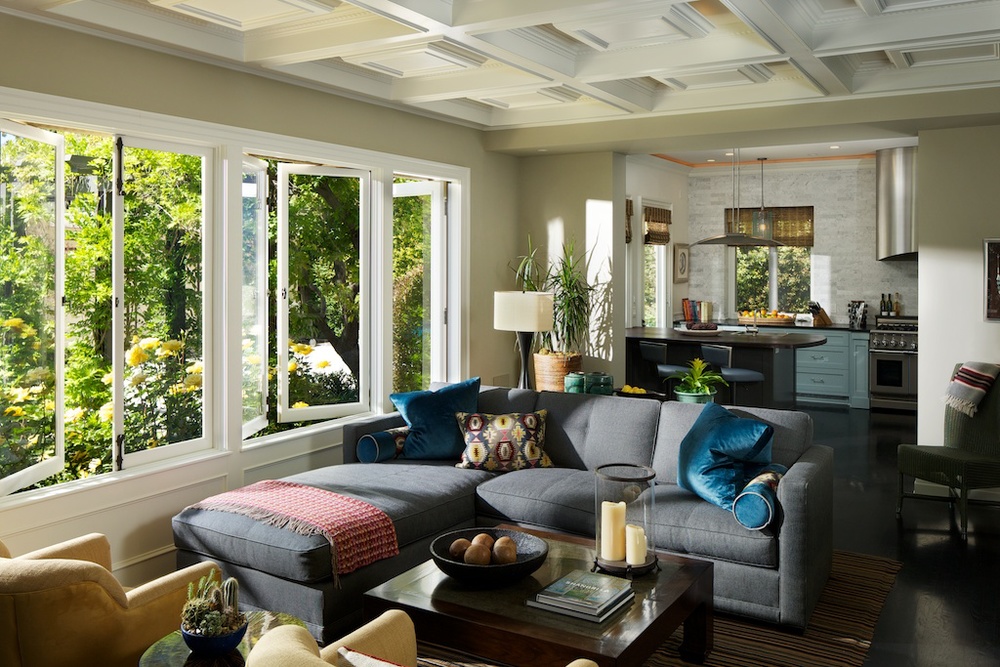Here is an example of what artificial light can do for an interior photo. While there are many instances where natural light may be all you need, this is a relatively common scenario that I see interior shooters struggling with on a regular basis.
If you look at the natural light photo, it may look okay at first glance. It's a beautifully appointed, well-staged room, and the composition is as good as it can get owing to obstacles out of the frame blocking any other compositions.

But then take a look at the image (below) where I used a healthy dose of artificial light. The true colors of the room immediately come out - the paint no longer has a sickly green cast from the grass outside, the furnishings are their intended colors, and the contrast of the room has improved ten fold. Not to mention the feel that artificial light is able to create - there would be no way to create this Sunday-morning feel using only natural light. HDR would yield a muddy mess, especially in such a high contrast situation, and attempting to use only a single exposure would be a disaster, as illustrated above.

So not only does artificial light create a room with correct colors and contrast, but it also lets us entirely change the mood of the photo - something that natural light alone would never allow us to do. And isn't that our job as photographers? To make a space look as good as possible? To want the viewer to say - 'I want that - to be there, soaking up that sun with my coffee and paper!' One of the best things an interior photographer can do for his or herself would be to master not only available light photography, but also to learn how to create emotion via the use of artificial light.
